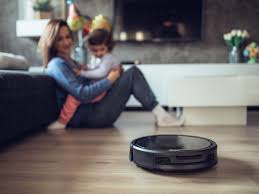As smart home technology continues to evolve at a rapid pace, staying ahead of obsolescence can be a challenge for homeowners. The emergence of new technologies promises to enhance the longevity and functionality of smart homes, ensuring they remain relevant and efficient for years to come.
1. Interoperability and Standardization
One of the significant challenges in smart home technology has been the lack of interoperability between different devices and platforms. New technologies are focusing on improving interoperability through standardization efforts.
- Unified Protocols: Emerging protocols like Matter (formerly known as Project CHIP) aim to create a unified standard for smart home devices. This standardization will enable devices from different manufacturers to communicate seamlessly with each other, reducing compatibility issues and extending the lifespan of smart home ecosystems.
- Integration with Existing Systems: Technologies that facilitate easy integration with existing smart home ecosystems, such as hubs and controllers that support multiple protocols, will help homeowners avoid the need for frequent upgrades due to compatibility issues.
2. Artificial Intelligence and Machine Learning
Artificial intelligence (AI) and machine learning (ML) are revolutionizing smart home technology by making devices smarter and more intuitive.
- Predictive Capabilities: AI-powered systems can learn homeowners’ habits and preferences over time, automatically adjusting settings and anticipating needs. This not only enhances user experience but also prolongs the relevance of smart devices by making them adaptable to changing lifestyles.
- Energy Efficiency: AI algorithms can optimize energy usage based on real-time data, reducing utility bills and environmental impact. This capability ensures that smart homes remain cost-effective and sustainable, aligning with future trends towards energy-efficient living.
3. Edge Computing
Edge computing brings data processing closer to the source of data generation, which is crucial for latency-sensitive applications in smart homes.
- Faster Response Times: By processing data locally rather than sending it to cloud servers, edge computing reduces latency, ensuring quicker response times for smart home devices like security cameras and voice assistants.
- Privacy and Security: Keeping sensitive data within the home’s network enhances privacy and security, addressing concerns about data breaches and unauthorized access. This approach also supports compliance with data protection regulations.
4. 5G Connectivity
The rollout of 5G networks promises to transform smart home connectivity by providing faster speeds, lower latency, and greater capacity.
- Enhanced Connectivity: With 5G, smart home devices can communicate more efficiently and reliably, supporting bandwidth-intensive applications like high-definition video streaming and virtual reality.
- Scalability: 5G networks are designed to accommodate a massive number of connected devices simultaneously, enabling the growth of smart home ecosystems without performance degradation.
5. Modular and Upgradeable Designs
Manufacturers are increasingly adopting modular and upgradeable designs for smart home devices, allowing components to be replaced or upgraded independently.
- Future-Proofing: Modular designs enable homeowners to adapt to new technologies and functionalities without replacing entire devices, thereby extending the lifespan of their investments.
- Flexibility: Upgradable components provide flexibility to customize smart home setups according to evolving needs and preferences, ensuring that homes remain adaptable to technological advancements.
6. Sustainability and Longevity
As environmental consciousness grows, smart home technologies are emphasizing sustainability and durability.
- Longevity: Manufacturers are focusing on designing products with longer lifespans, reducing electronic waste and minimizing the frequency of upgrades.
- Energy Efficiency: Smart devices are becoming more energy-efficient, consuming less power during operation and standby modes. This not only reduces utility costs but also contributes to environmental conservation.
Conclusion
The integration of new technologies such as unified protocols, AI and ML, edge computing, 5G connectivity, modular designs, and sustainability initiatives is transforming smart homes into more resilient and future-proof environments. These advancements not only enhance user experience and convenience but also ensure that smart homes can adapt to technological innovations and remain relevant for years to come. By embracing these technologies, homeowners can effectively mitigate the risk of obsolescence and enjoy the benefits of a connected and intelligent living space well into the future.



